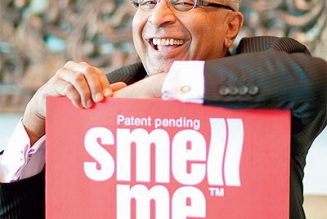Prime numbers are numbers that can be wholly divided only by themselves and one. Some experts say that prime investments are just as specific and unique. However, this is not really the case. Investment types and styles vary markedly, as do investors’ opinions about what is best suited to their individual needs.
We have recently talked about property as a part of your overall investment strategy, taking into account not only your home but also investment property as a commercial proposition. Cautious investors believe that a bank account is the safest place to invest, while others will agree with statistics that prove equities will always outperform bank deposits over a given time frame. In summary, there will always be an argument to include a broad range of asset types in any portfolio.
There are also many other ways in which we can invest and diversify. Some believe endowment insurance policies are the way forward, while others go to extremes and buy into businesses such as rubber plantations or cinnamon farms, or even into a pooled investment of some type of similar direct agricultural venture such as timber production.
Individually, all of these will add their own specific value to any portfolio. If you have a substantial amount to invest, such diversity is probably best for you. However, when we say “diversity”, what exactly are we talking about? It actually means your risk appetite _ how much risk you are prepared to take on by adding a specific asset class to your portfolio. In turn we can look at this and determine how much diversity you want and what portion of your overall portfolio you would allocate to higher-risk investments.
Let’s say someone offers you an investment in a lottery ticket. Here is a very risky investment since you know you will lose all your seed capital if you do not hit the jackpot. But with a jackpot of many millions, the risk is often tempting. So, if you only had US$30 (920 baht) to invest would you spend $10 of it on a lottery ticket? Most people would not. If you had $1,000 the chances of your buying that ticket would be higher. If you had $100,000, it would be a “no brainer”. But why is this? This is because you are not risking a very high portion of your seed capital in an attempt to make a massive easy reward.
So, let’s move away from the lottery and look at some relatively low-risk investments. If you had $100,000 to invest, would you buy part of a rubber plantation? Well, assuming the initial capital is $50,000, it is unlikely. This is partly because few investors understand these types of ventures. If you had $1 million and were married to a Thai national who was very keen to invest in rubber, you may well agree to the $50,000 on the basis that you have some opinion about the subject and access to better information because of your relationship with your Thai spouse. You would also only be risking 5% of your capital.
So, how risk is spread is a factor in deciding where to invest. Some self-investors spend a lot of time studying companies and analysing balance sheets, price/earnings ratios, cash availability, senior management personnel and other important factors to decide whether to buy shares. That is OK if you are prepared to do such intense research.
The vast majority of investors will discuss their ideas with friends or people such as bank managers. They may also do some reading on how to secure good growth without losses.
The prime factors remain how much risk you are ready to take and how diversified you need to be to avoid unnecessary risk. For many investing in an index tracker is as good as anything when it comes to equities.
Equity markets around the world have interesting statistics and characteristics.
If we look at the London Stock Exchange and its secondary Alternative Investment Market, there are a total of 1,960 UK incorporated companies with shares listed. These exclude the foreign companies with their own secondary listings in London. Of the 1,960 there are 1,063 companies with fewer than 50 million (2.47 billion baht) market value each. The top 10 capitalised companies consist of household names and among these the smallest company value is 46 billion with the largest company at 134 billion. So, we really are looking at these top 10 companies influencing the UK market markedly. The situation in other bourses around the world is very similar.
It is also true to say that the four Financial Times Stock Exchange 100 stock index companies with the most substantial growth performance and indeed combined dividend yield in 2010 were not in these top 10 capitalised giants. The capital growth of these four ranged between 30% and 70%, while the dividend yields were between 2.2% and 4.8%.
The point here is that it is not necessarily the largest companies that have the best performance, but they will have substantial influence on equity market movements.
Equities are certainly an important part of any portfolio for most savvy investors. However, even if you can get the mix right, in terms of what you invest in, there ought to be some further diversification into what we call non-correlated assets. These can be rubber plantations, property, commodities, precious metals and a host of others.
In recent years equity markets have been directly accessible to most investors. This was not always the case in practice. Along with the access came the complications of administration of share ownership. Most people know today what a bid/offer spread is. Not so long ago very few people did. To trade equities you will need a trading account. This will also need to be financed and then you will need to make your own trades. A stockbroker will also help you with this but he will charge for his service. Remember that we are only talking about equities here.
There are some very innovative vehicles that will combine all the aspects of equities and non-correlated assets into a manageable platform for you. This type of facility is designed to cater for those who wish to have such diversification in their portfolios and the facility to enable changes whenever required.
The stockbroker can handle equities with you; the banker will assist you with your cash management; an insurance broker can arrange various policies. On the other hand, you can take counsel from an independent financial adviser. He will profile you and look at your entire situation, including your investments, retirement planning, pension funding, life and health insurance requirements, your taxation affairs, succession planning, the use of trusts, inheritance taxation and any of the other matters associated with the business of living life.
This professional will also bring together and centralise all your affairs and ensure they are managed for you in your best interest. We are all aware of the ex-ice cream salesmen who set out their shingles as “financial advisers” after a week of training. You will quickly learn who is a true professional after meeting with your expert. He will be knowledgeable in the broad aspects of organising your business life and helping you to get things in order. The phoney will bombard you with high commission-paying products and disappear shortly thereafter.
The genuine adviser will spend a lot of time researching for you and discussing your requirements before making any recommendations for change. He will also explain any changes he feels are necessary and make sure that you are actively involved and informed every step of the way. If these changes involve more costs, then he is the fake you may have suspected.








